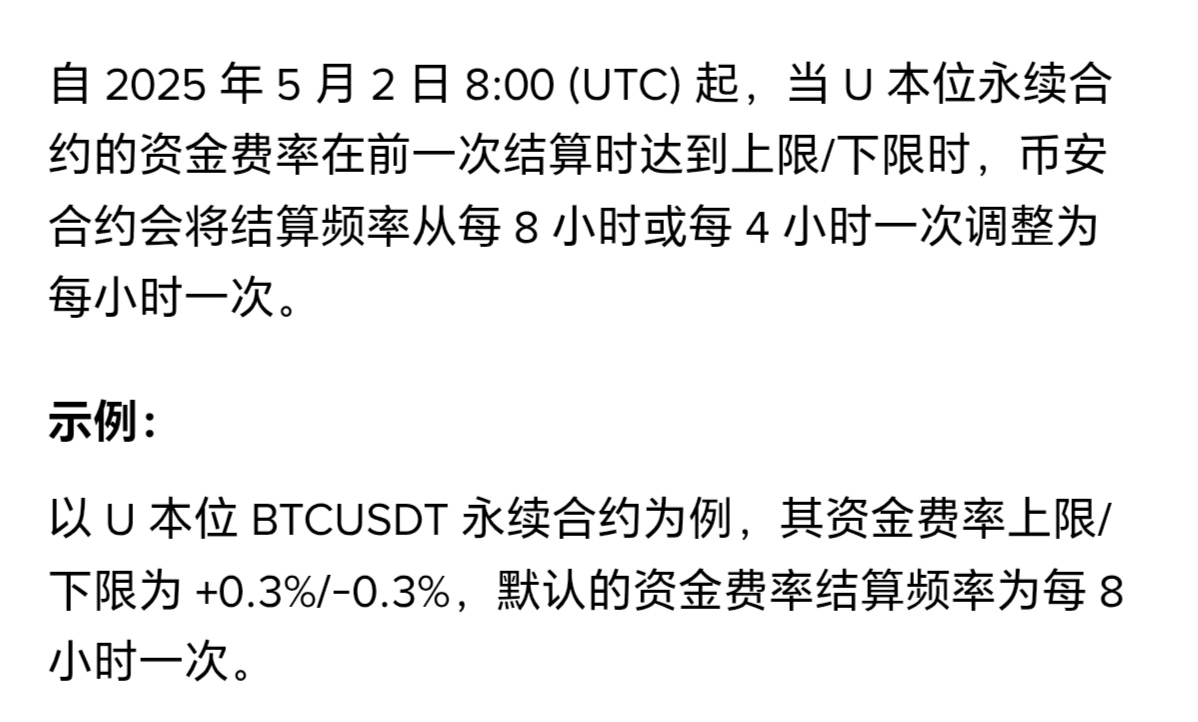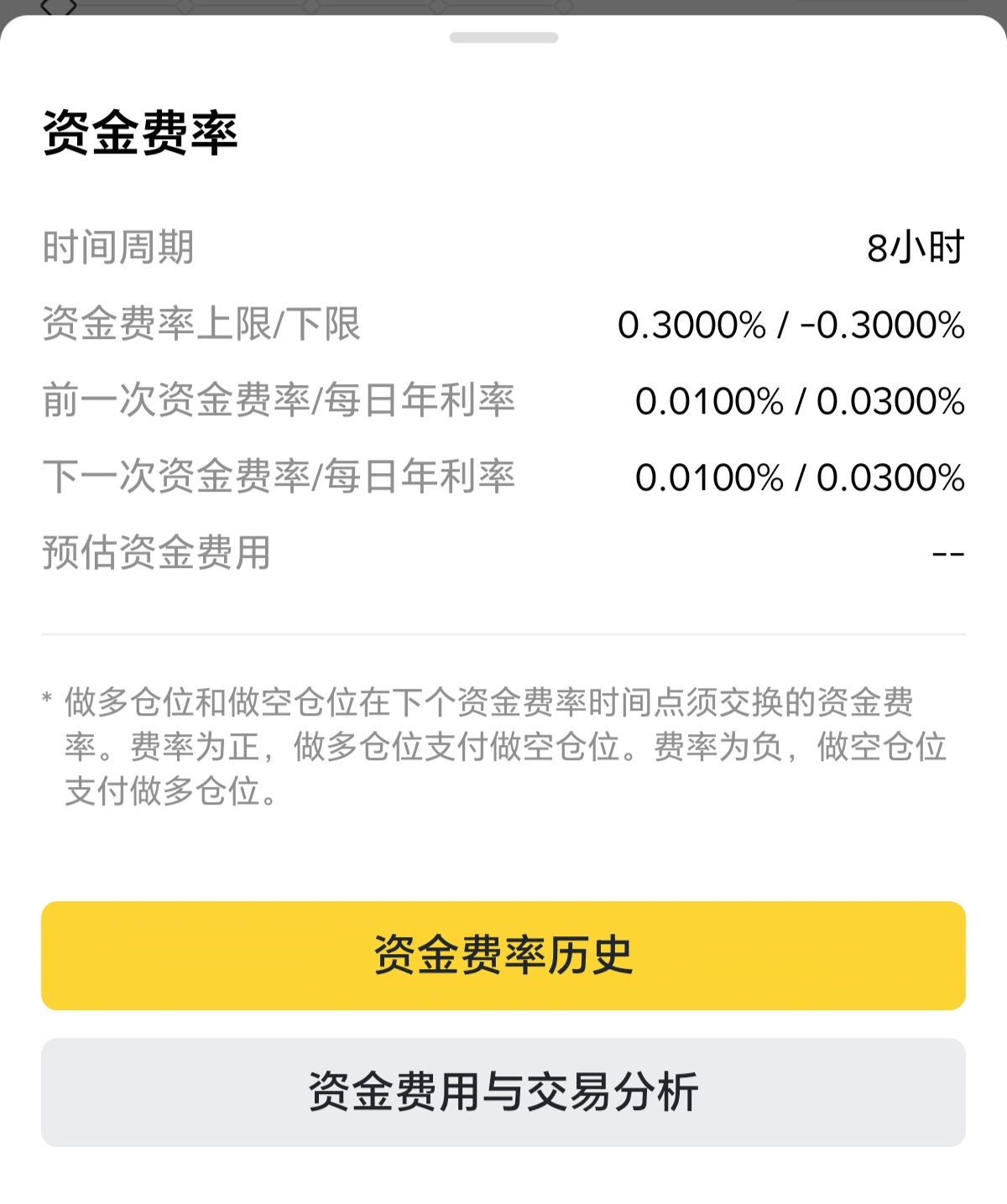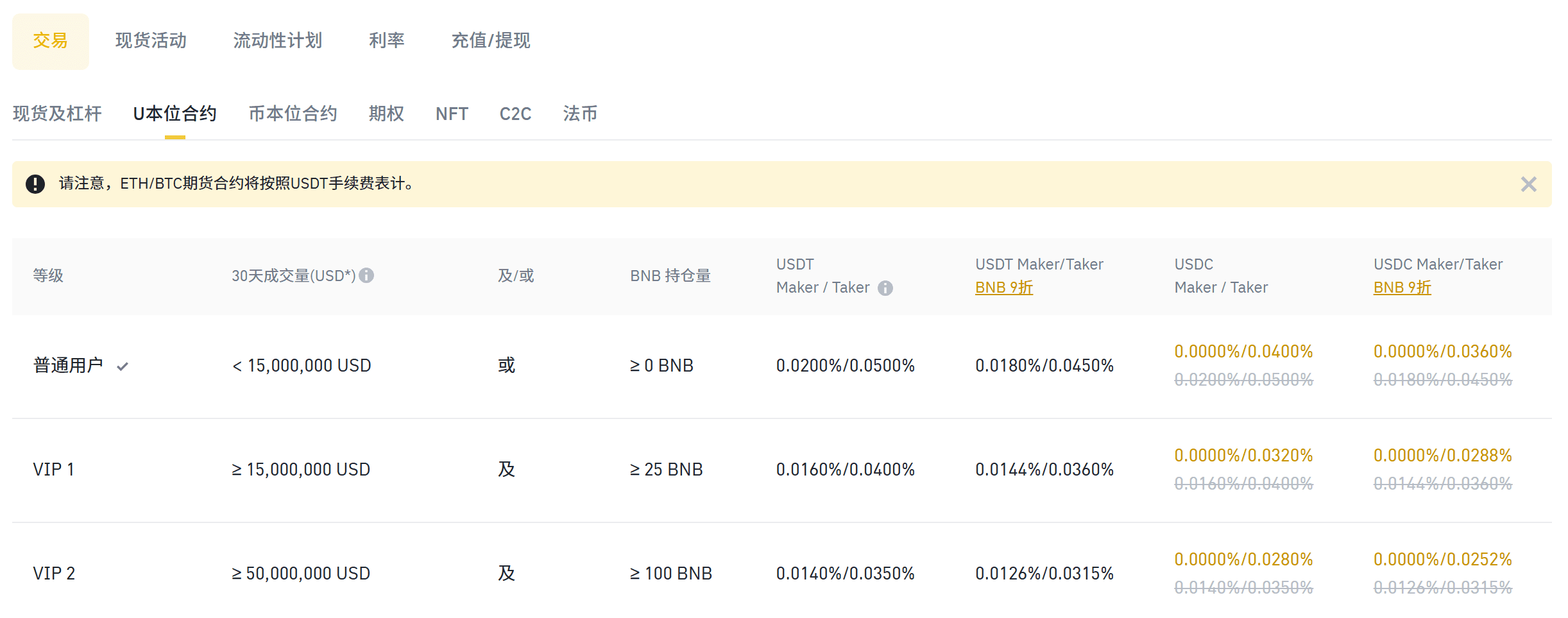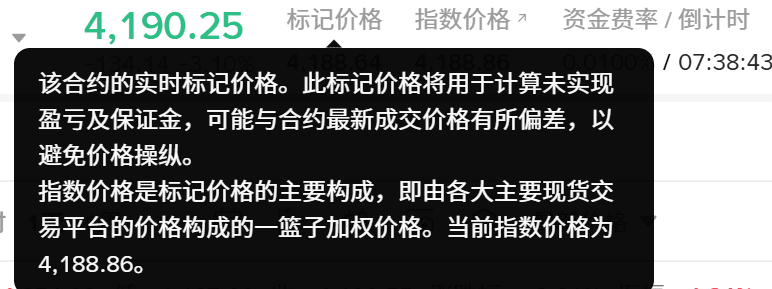Tonight, watch the live trading competition hosted by the Binance Chinese community. Many new friends in the comment section are not very clear about many rules of contracts.
Writing a related article might be slightly helpful.
This article mainly explains the following content:
Funding Fees
Many factors influence this, and the algorithm is quite complex.
When the rate is positive, the long position pays the short position. Conversely, when the rate is negative, the short position pays the long position.

In May 2025, Binance introduced new rules where the funding fee will be charged every hour after the maximum/minimum values are maintained for 4/8 hours (mainly targeting explosive altcoins).

Fees
Binance contract fees are divided into Maker (limit order) and Taker (market order). The fees for regular users are 0.05% and 0.02%, respectively. 99.99% of market price transactions are Takers, and the fees are 2.5 times more expensive than Maker fees. When opening a position, you can place a limit order to 'mark' (input) a specific price (which cannot be executed immediately). Once the price reaches your set price, the transaction will be a Maker, resulting in relatively lower fees.
Fees are directly proportional to the size of the position and have no direct relationship with leverage. For example, if you have 100 USDT in your contract account and you use BTC/USDT as the underlying asset with leverage set to x10, if you place a full margin limit order (Maker) to buy (long), your total position is equivalent to 100 × 10 = 1000 USDT of BTC, and the fee is 1000 × 0.0002 = 0.2 USDT.
Of course, there are some promotional discount trading pairs, currently mainly related to USDC contract trading pairs, with Maker (limit order) fees at 0.

Mark Price, Latest Price, Index Price
Especially when setting take profit or stop loss, the input prices for take profit and stop loss are on the far right side, where you can choose from three different prices.
The mark price is relatively not easy to hit for take profit or stop loss. For example, Ethereum may have a deviation of five to ten dollars, especially when there are spikes. The latest price can be used for take profit, and when I set a stop loss, I generally prefer to use the mark price.

Forced Liquidation
When your margin reaches 80%-90%, meaning your margin has not been completely lost, the platform will trigger a forced liquidation to avoid severe price fluctuations that could lead to a deficit. Conversely, the costs of forced liquidation will accumulate in Binance's risk margin to cover user debts due to severe fluctuations. Therefore, even after a deficit, Binance will automatically cover the debt in about 15 minutes if it is below the maximum payout amount.
Differences between USDT-based contracts and coin-denominated contracts
USDT-based contracts use USDT, USDC, etc. as margin (collateral), and profits and losses are settled in USD.
A coin-denominated contract uses the corresponding cryptocurrency as margin. For example, if you use BTC/USD as the underlying asset, you need to transfer BTC to the coin-denominated contract account to use BTC as margin for going long or short. Your profits and losses are settled in BTC.
Some spot holders will short one time at what they consider a high point to hedge their BTC holdings. When the price drops, they will gain BTC equivalent to the drop amount. When the price rises, the quantity of BTC they hold will decrease, but the value of their held BTC remains unchanged. Therefore, apart from the opening fees and funding costs, the value of the Bitcoin they hold will not change, which is also the function of a one-time short position in BTC.
(If there are any content issues, please leave a message to point them out. Thank you 🙏)




